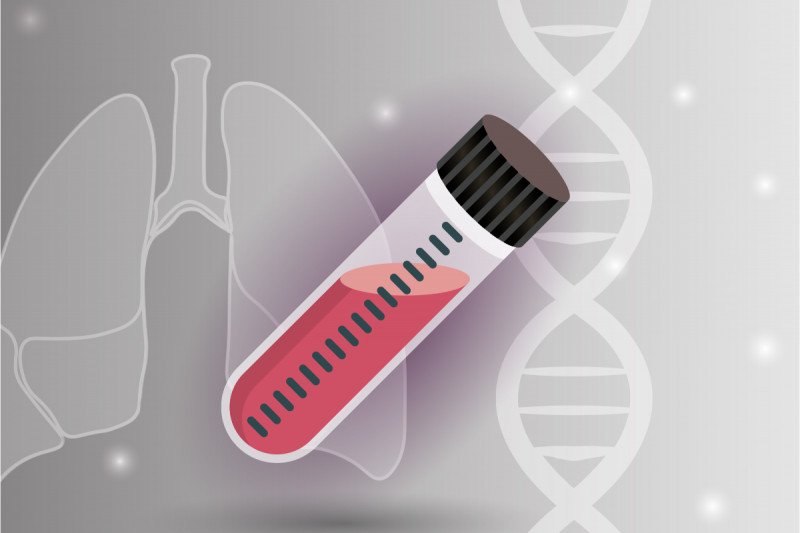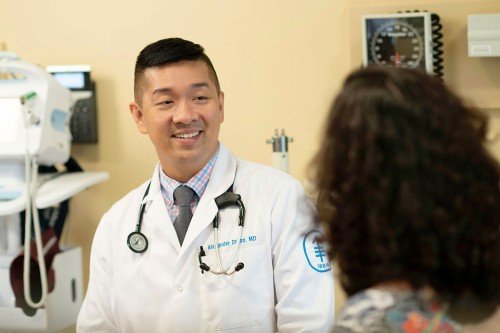
Liquid biopsies offer doctors a way to look for cancer in the body without performing surgery. The tests measure DNA from tumors that is circulating in the blood.
Doctors and patients alike have cheered the arrival of liquid biopsies to modern cancer medicine.
These high-tech tests measure infinitesimally small amounts of DNA that is shed from tumor cells and is circulating in the blood. The tests can provide doctors with information about which mutations are present in a person’s cancer, without needing to perform a surgical biopsy. Several are commercially available.
While much touted, liquid biopsies have yet to really prove their mettle when it comes to improving patient care.
“We still don’t have good evidence showing whether and how a liquid biopsy can help people who are struggling with cancer today,” says Bob Li, a medical oncologist at Memorial Sloan Kettering who specializes in the treatment of people with lung cancer. “There is an urgent need to demonstrate not only the scientific validity of the test but also its clinical utility — how it can help patients.”
That’s why, two years ago, Dr. Li and his colleagues began a prospective clinical study to evaluate whether a liquid biopsy test could help guide treatment decisions for people with lung cancer. The initial results of the ongoing study were published on November 28 in the Journal of the National Cancer Institute. The authors conclude that liquid biopsy–guided treatment is “feasible, rapid, and useful.”
Details of the Study
The paper covers the first 210 patients enrolled in the study. They all had advanced-stage non-small cell lung cancer that either had no known mutation that could be targeted with a drug or had stopped responding to a targeted therapy. Their cancers had spread beyond the primary location.
Each patient had the liquid biopsy test performed on a blood sample. About half of the patients (106) also had their tumor tissue genetically sequenced by MSK’s DNA-sequencing platform, called MSK-IMPACT™.
Among the most important benefits of the liquid biopsy was the quick turnaround time. It took a median of nine days from the time of the blood draw for doctors to get the results of the liquid biopsy. It takes a median of 20 days from the time a tissue specimen arrives in a lab to get results from tumor sequencing.
Given that people with late-stage lung cancer can be quite sick, that time difference can be significant.
“The overall health of a person suffering from advanced-stage lung cancer can deteriorate very rapidly in the space of a couple of weeks,” Dr. Li says. “Sometimes if you wait too long, you’ve missed the boat, so to speak, for effective treatment.”
But if a liquid biopsy turns up a targetable mutation, doctors can act on it right away.
In the study, just over 45% of the patients were found by liquid biopsy to have a mutation that could be targeted by an approved or investigational drug. About 22% of the patients (46 people) received one such drug, and nearly all of them experienced a benefit — namely, a decrease in the size of their tumors.
What the Liquid Biopsy Measures
The particular liquid biopsy test used in this study is made by Resolution Bioscience, a biotech company based in Redmond, Washington. It looks for mutations in 21 genes that are known to be involved in non-small cell lung cancer.
By comparing the results of the liquid biopsy to those of tumor tissue, the team determined that the overall concordance rate between the two approaches was 56.6%. This means that for a little more than half of the people, both tests identified at least one mutation in common.
What cheered the team more was that when they looked just at people who tested positive for a cancer mutation on the liquid biopsy, 89.6% had that same mutation also identified by the test of tumor tissue. Finally, when the investigators looked at only patients with driver mutations found on the liquid biopsy — those that matter most in terms of treatment — the rate of agreement between the two tests was 96.1%.
“If I see that a patient has a liquid biopsy result that is positive, especially for a driver mutation, I’m confident that I can match the patient to a therapy and treat that patient immediately without waiting for the tissue results,” Dr. Li says.
One major caveat, he notes, is that a negative result on a liquid biopsy does not mean that a person has no targetable mutations. In that case, the person would need to have a tissue biopsy to look for a targetable mutation.
More than an Academic Pursuit
MSK, the University of Sydney, and Resolution Bioscience are academic collaborators on this study, and there is no exchange of money between them. Resolution Bioscience covers the costs associated with the test for all enrolled patients, and neither MSK nor the University of Sydney charges Resolution Bioscience for access to patients’ blood. Patients who consent to the study receive the liquid biopsy free of charge.

For Dr. Li, the results of the study are much more than a narrow academic concern. People’s lives depend on it.
He gives the example of a patient who was misdiagnosed at another hospital before coming to MSK. “This previously healthy young man was so sick with widespread metastases, he had lost 30 pounds,” Dr. Li recalls.
He ordered a liquid biopsy, and within days it showed that his patient had a targetable mutation. Dr. Li quickly started him on a matched drug.
“The patient immediately felt better,” he says. “This was about a year ago, and now he’s playing basketball and is back to work. He’s quite excited about the results of this study as well.”
Dr. Li suggests that patients talk to their doctor about whether a liquid biopsy might help direct or improve their treatment.
“We’re very pleased that our study showed the value of a liquid biopsy. We hope that such tests will eventually become an integral part of care to help many more patients,” he says.




